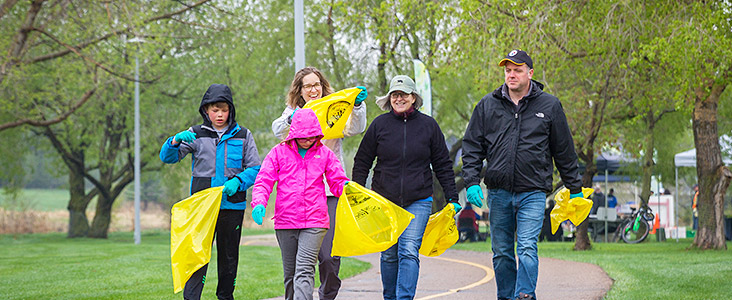Native Plant Species
The City has identifed 12 native plant species that are commonly planted within designated naturalized areas. We encourage residents to plant these native trees and shrubs in their backyards as they have great environmental benefits. The latin names were provided to avoid confusion when purchasing plants as some species have many common names.
Aspen
Populus tremuloides
- Leaves tremble with a slight breeze
- Wildlife such as beaver, rabbits and deer browse both leaves and bark, while birds will use it for nesting sites
Balsam Poplar
Populus balsamifera
- Fast growing, fast suckering tree that can handle seasonal flooding
- Produces small green capsules that form loose cotton masses in the spring
White Spruce
Picea glauca
- Browsed by mammals and provide a nesting site for birds; makes a good winter cover
- Since 2014, over 23,000 white spruce seedlings have been planted in Grey Nuns White Spruce Park

Red-osier Dogwood
Cornus stolonifera
- Fruit and twigs are used by several species of wildlife, such as robins, cedar waxwings, rabbits, and moose
- Provides dense cover for a large number of wildlife species
Saskatoon
Amelanchier alnifolia
- Produces clusters of edible blue to dark purple berries when rype
- Strong ability to grow in colonies; prefers dry sites and good sun exposure
Prickly Wild Rose
Rosa acicularis
- Provides protective habitat; important winter food source for many birds and mammals
- Designated as Alberta's floral embem since 1930
Silverberry
Elaeagnus commutata
- Features small fragrant buttery yellow bell-shaped flowers
- Commonly called 'wolf willow' due to silver deciduous foliage
Pin Cherry
Prunus pensylvanica
- Produces a small, round bright red cherry on a single pin-like stem
- Intolerant of shade, very seldom found growing in mature forests
Canada Buffaloberry
Shepherdia canadensis
- Flowers are one of the first to bloom in early spring, providing food for pollinators
- Produces red berries that have a bitter taste that can sweeten after a frost or when dried
Highbush Cranberry
Viburnum opulus
- This shrub is a member of the Honeysuckle family, though its fruit strongly resemble cranberries
- Black bears and birds, eat the berries in the fall, and provide winter cover for small mammals and birds
Wild Red Raspberry
Rubus idaeus
- The best time to plant wild raspberries is during the early spring, after the last frost
- Shrub provides hollow stems for native pollinators to overwinter
Pussy Willow
Salix discolor
- Used as food and cover for a variety of wetland wildlife
- Flowers are a source of nectar and pollen for bees in the early spring
Related Pages
Last edited: June 16, 2023













